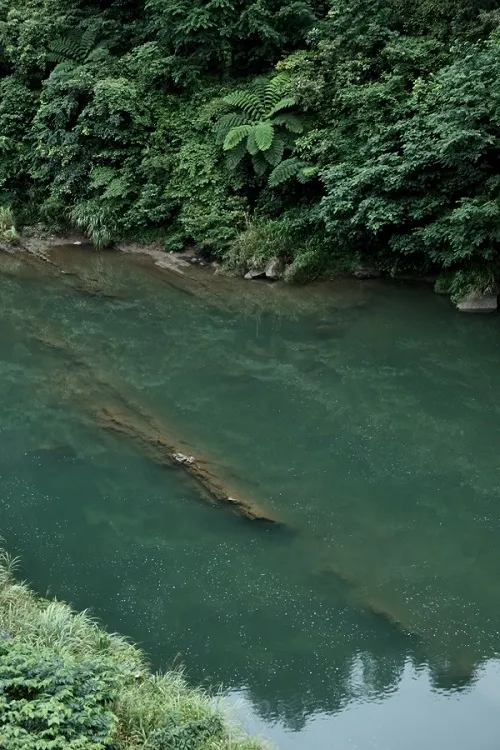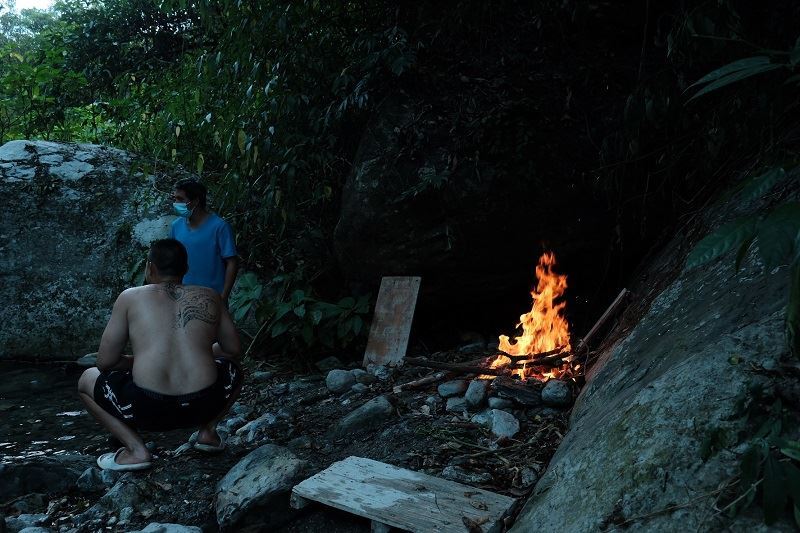Article by Isis Calderon
One of northern Taiwan's wildest, unspoiled areas is condemned to have its water diverted. Plans are underway to divert water from the Nanshi Creek (南勢溪) in New Taipei City’s Wulai District to the upper reaches of Shimen Reservoir (石門水庫) located in Taoyuan county. The project is the government's suggested response to the recent years of droughts, as well as to Taiwan's agricultural and industrial sectors and the country's household water needs, which are getting harder to support.



▲Overseeing the pristine waters of Nanshi Creek
/ Photo credit: Isis Calderon
The project to divert water from Nanshi Creek to the Shimen Reservoir proposes digging a 17.2 km network of 5-meter wide water pipe tunnels drawing water from Tunlu (屯鹿) in the upper reaches of Nanshi River to Cheliao Keng (車寮坑). It is estimated this will cost 18.6 billion Taiwanese dollars and take 4.5 years to complete, would add 107,000 tonnes of water per day to Shimen Reservoir and the reservoirs that serve Hsinchu Science Park, effectively draining the Nanshi Creek and, while doing so, wrecking an ecologically and culturally sensitive area.
Drought looms on a rainy island
The years 2015 and 2021 were difficult periods for Taiwan. Both of which were long years of drought left the island with a sense of anxiety and commotion for what the future behold - one of the rainiest places on earth had little to no rain, given that no typhoon hit the island, 2021 was the worst drought in 56 years according to Taiwan Water Corporation. The rain scarcity led most reservoirs to less than 20% capacity, with water levels at some falling below 10%. Households and the two most significant economic drivers on the island: the semiconductor and agricultural industries, were hit hard, revealing the vulnerabilities of the island's resource management and its evident susceptibility to climate change.
With the looming presence of a severe drought in mind, the project to divert water from Nanshi Stream to Shimen Reservoir was brought to the table by the Ministry of Economic Affairs' Water Resources Agency (WRA). The Water Resources Department explained that last year during the severe drought period, Feicui Reservoir—located in the Xindian District—was nearly full due to the northeast monsoon rainfall, while the south of Taoyuan faced a severe water shortage, demonstrating the great disparity of two neighboring places, each with significantly different water conditions. Therefore, this project aims to promote similar conditions for life on the island.
To ease drought with people’s tears
The indigenous tribes in Wulai are protesting and outraged about this project because of its potential to destroy a culturally and environmentally sensitive area. According to several research projects conducted by the International Journal of Environmental Research and Public Health, water diversion projects are known to change ecosystem dynamics drastically.
“The water you want is my tears,” local tribes protested after learning about the project in August. The Atayal tribes highly depend on the water stream that Nanshi Creek provides. A decrease in its natural flow would directly impact every aspect of the aboriginal peoples' livelihoods - from their farming practices to the wild animals they hunt and the ecosystem richness and diversity in which they live.



▲A couple of siblings that belong to the Atayal tribe lay on a rock while hunting for frogs
/ Photo credit: Isis Calderon
A community leader, who wishes to remain anonymous, commented during an interview: “We feel upset and hopeless. Don’t we have the right to have a voice and agency?” Around 100 people now live in the Tunlu tribe, the closest tribe to the creek headwaters. They settled in this location 40 to 50 years ago, and now they might face a second relocation. On the same note, Zheng Ming-Guang, chairman of the Fushan Tribe, interviewed by United News Network, said that the large-scale water diversion project would inevitably damage the soul of the mountains, wildlife, and forests.



▲Members of the Atayal tribe light a bonfire along one of the rivers that the Nanshi Creek feeds
/ Photo credit: Isis Calderon



▲The family gathers together for a barbecue along the river
/ Photo credit: Isis Calderon
What the future looks like
The project's future remains uncertain, as is the case for the mountain's diverse ecosystems, aboriginal communities, and a river that carries and sustains so much life through the hills of Wulai to Taipei. While the threat of drought looms on the island, we must raise the following questions: is Nanshi Creek to the Shimen Reservoir project a feasible solution to future shortages that considers the needs of people and the environment? Reports have yet to be published on how significant the impact of a water diversion project of this scale would be in the Wulai area.
What it’s clear is the need to come to a consensus on the agency that needs to be attributed to communities that largely depend on the stability of the Nanshi River stream, the fundamental importance of being part of such a decision-making process, and above all, the right to be part of the motivation behind the project, which is to have the same living conditions on the same island, meaning equal access to clean, pure water.